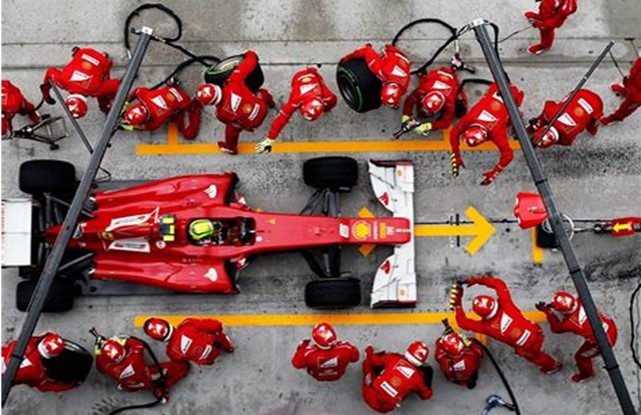The Challenge
Experiencing exponential growth and evolving from a start-up into an industry-leading multinational corporation within a short time frame is certainly a cause for celebration. Yet, it also presents substantial challenges. Our client organization underwent significant shifts in terms of employee numbers, departmental structure, and client demand. Consequently, it was time to pause and re-evaluate the core of the business.
One key challenge was the need to improve intra-organization communication, foster collaboration, nurture trust, and ultimately, shape high-performing leadership teams capable of delivering extraordinary results. Further complications arose due to a lack of awareness about the power of culture. The leadership team was spread thin over numerous strategic initiatives, often overlooking the fact that culture could either enable or hinder their execution. There was also a lack of alignment on the cultural archetype that would deliver the desired strategic priorities.
Our Approach
We followed a top-down approach. We initially worked with the top leaders, intending to create culture carriers whose actions could provide a model for the rest of the employees.
Once the strategic priorities were streamlined, the leadership team aligned around their cultural archetype of choice, the best asset for effectively executing the business strategy. We expanded culture awareness through participative masterclasses with the leadership team and its members’ respective teams, as well as with leaders hired over the pandemic in a custom onboarding and upskilling program.
We worked with representative business units’ leadership teams, making up approx. 90% of the business, transforming them into living, breathing examples of the desired culture and high-performing, cohesive teams. We drew a baseline through both an internal survey and a self-assessment of the team based on Patrick Lencioni’s “Five Behaviors” model, and crafted a roadmap for one to two, 90- or 100-day sprints.
These sprints focused on building trust, managing conflict, making commitments, embracing accountability, and focusing on shared results. Between sprints, we paused and learned, revisiting the assessments to gauge progress. We tailored our roadmap based on these results, providing a collective track where the group received team coaching on the back of their regular business meetings facilitated by their head coach, and an individual track where each leader had a set of coaching sessions with a supporting coach to work on their particular development needs in service of the team goals.
As the roadmaps were being executed, the strategies deployed varied depending on the unique needs and baselines of the different groups. For instance, some focused on establishing or refining their team’s purpose, vision, and mission. In contrast, others worked on managing the false polarities and trade-offs inherent in their organizational matrix. Furthermore, a third subset spent time learning how to express difficult truths to each other in a way that was both honest and respectful.
The common thread through all these approaches was the application of basic conscious business principles, mindsets, and behaviors. We encouraged shifting from a blame culture to one that embraced responsibility, promoted systemic thinking, and practiced skillful inquiry and advocacy. These actions fostered an environment that nurtured open dialogue and a sense of shared accountability.
As the leadership teams (LTs) began to make progress, they garnered traction within the broader organization. Seeing their evolution, other teams—both their peers and their reports—requested their own sprints to work on their issues, too. To optimize resources and align with the overarching business strategy, we prioritized support for these additional teams based on the specific strategic priorities each team was serving.
Furthermore, as the LTs began demonstrating the new behaviors—or at least showed proof that they were working on their own gaps as individuals and as teams—they started to reshape the organization’s culture at a more profound level. The rest of the organization received the beta version of their evolved culture narrative, providing them with an opportunity to understand where to focus. This was not just a document to read; they could actually see their leaders walking the talk and holding themselves accountable for the declared standards of behavior. This was most prominently displayed at the annual summit, where leaders pledged their commitment to the new culture in front of the extended leadership community.
The Impact
After working directly with 7 leadership teams over two years and indirectly influencing the top 350 leaders of the 16,000-strong workforce, our coaching sessions facilitated significant achievements.
- Provided a structure and methodical approach for building high-performing leadership teams that “carried” the desired culture.
- Crafted and guided the team with a set of operating rules, principles, and values, underpinned by a unifying purpose.
- Encouraged open discussions about different issues and provided solutions.
- Promoted the idea of “one team, one voice.”
- Recognized the importance of conflict management and its potential to improve workplace dynamics dramatically.
- Consolidated effort in priorities, with one of the top LT members even sacrificing his hiring to serve the greater good and ensure sufficient resources for the priority project.
- Improved their offerings by working as a unified team, providing more integrated service/experience to customers, hence strengthening their business strategy.
